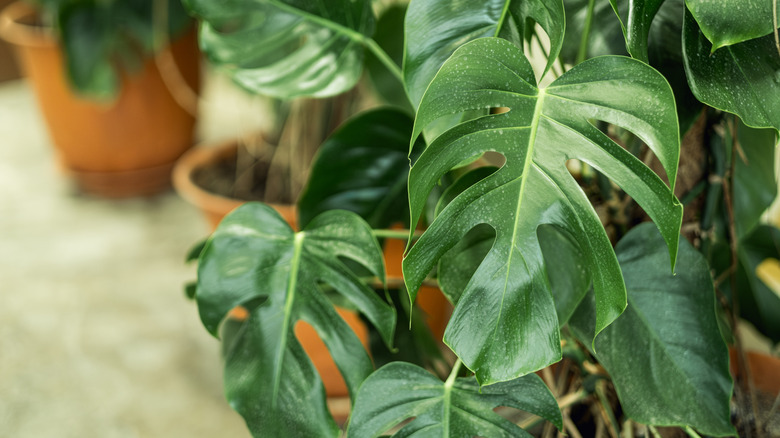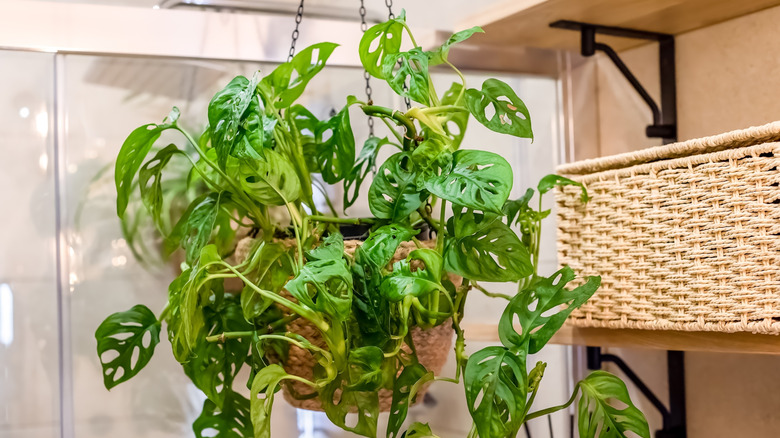What's In A Name? Monstera Vs. Swiss Cheese Plant
Learning to identify plants as a new houseplant parent can be intimidating. At first, they all kind of look the same (green and leafy), but after a while, you start to recognize differences: leaf shapes and sizes, textures, variegation, and growing habits. You know you've moved up a level when you start referring to them by their scientific names. ("Your Hoya cinnimomifolia is absolutely radiant!")
No matter how confident you've become in memorizing plant names, you're bound to run into confusion when a friend mentions their Swiss cheese plant and points to something that is not at all what you expected it to be. Before you think that your plant flash card drills have been in vain, hold on. You and your friend are both likely correct. The Monstera deliciosa and Monstera adansonii — two of the Monstera plant varieties you should know about — both are referred to as Swiss cheese plants, but are distinctly different species.
Monstera deliciosa, the larger of the two, has been a social media darling for many years, sparking envy over photos of enormous plants towering over their owners. Its glossy heart-shaped leaves resemble Swiss cheese with their signature cuts, or fennestrations, which can tell you about the health of the plant. Contrast this with the Monstera adansonii, which has much smaller leaves than the deliciosa and grows more compactly but can trail from a hanging basket or be trained up a pole as a vine. Its leaves are slightly crinkled (versus the smooth surface of the deliciosa), and its fenestrations are complete ovals.
Decoding plant names
Now that you have a better understanding of the difference between the two, it's also important to know how they're related. To do that requires a basic primer on plant names. All plants have a family name — in this case, the Araceae family — as the overarching category. One level below that is the genus (or generic name) and, underneath that, the species (the specific variety). Taxonomists identify plant similarities and categorize them into genera (the plural for genus). The Monstera genus is just one of 140 genera within the Araceae family. Since the two Swiss cheese plants both belong to the Monstera genus, this means they have similar enough characteristics to be grouped together but are distinct enough to warrant their own species: deliciosa and adansonii.
One thing to note, which adds to the confusion around these plants' names, is that these two Monsteras are also called split-leaf philodendrons. Don't be fooled, though. They are not Philodendrons, which are a different genus within the Araceae family. Interestingly enough, the Philodendron bipinnatifidum — also known as the Tree Philodendron, one of the best houseplants to grow if you live in a warm climate — also goes by the name of split-leaf philodendron. The bottom line: Always double-check scientific names since common names aren't reliable differentiators.

